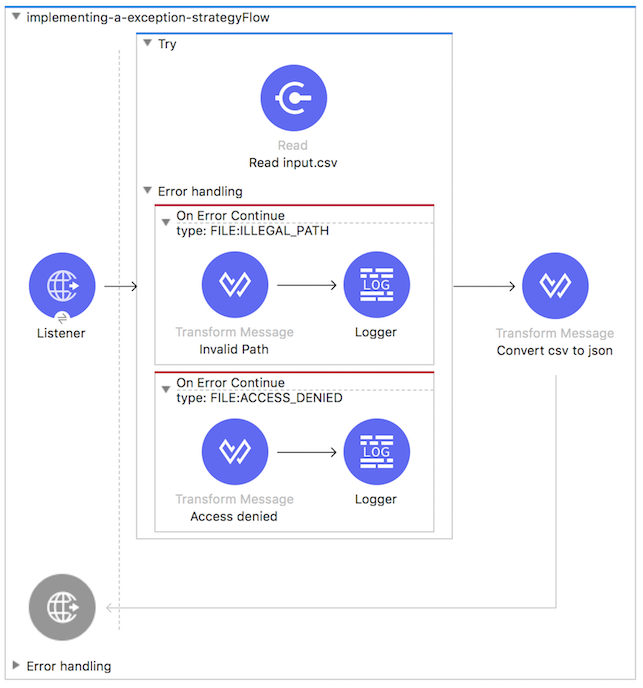Implementing an Exception Strategy
home
This example illustrates the concept of error handling in Mule. This particular example deals with exception strategy.

Example use case
The Mule application reads a CSV file and returns exception messages for two types of error:
- The request specifies an invalid path.
- The request specifies a file that read permissions are not granted on.
Set up and run the example
- Open the Implementing a Exception Strategy example project in Anypoint Studio from Anypoint Exchange.
- In your application in Studio, click the Global Elements tab. Double-click the HTTP Listener global element to open its Global Element Properties panel. Change the contents of the port field to required HTTP port (e.g., 8081).
- Run the example project as a Mule application
- In your browser, access the URL
http://localhost:8081/?filePath=invalidPath. This message specifies an invalid path, and the application returns this error message: {"message": "Your path is invalid"} - In your browser, access the URL
http://localhost:8081/?filePath=path, substituing the path to the fileinput.csvfor thepathvariable. The application returns the following payload: [{ "orderId": "1", "name": "T-shirt", "pricePerUnit": "25.0", "units": "2"},{ "orderId": "2", "name": "Jacket", "pricePerUnit": "40.5", "units": "3"}] - In your browser, access the URL
http://localhost:8081/?filePath=path, replacing thepathvariable this time with the path to a file that does not allow read access. The application returns the following error message: {"message": "Access to file denied"}